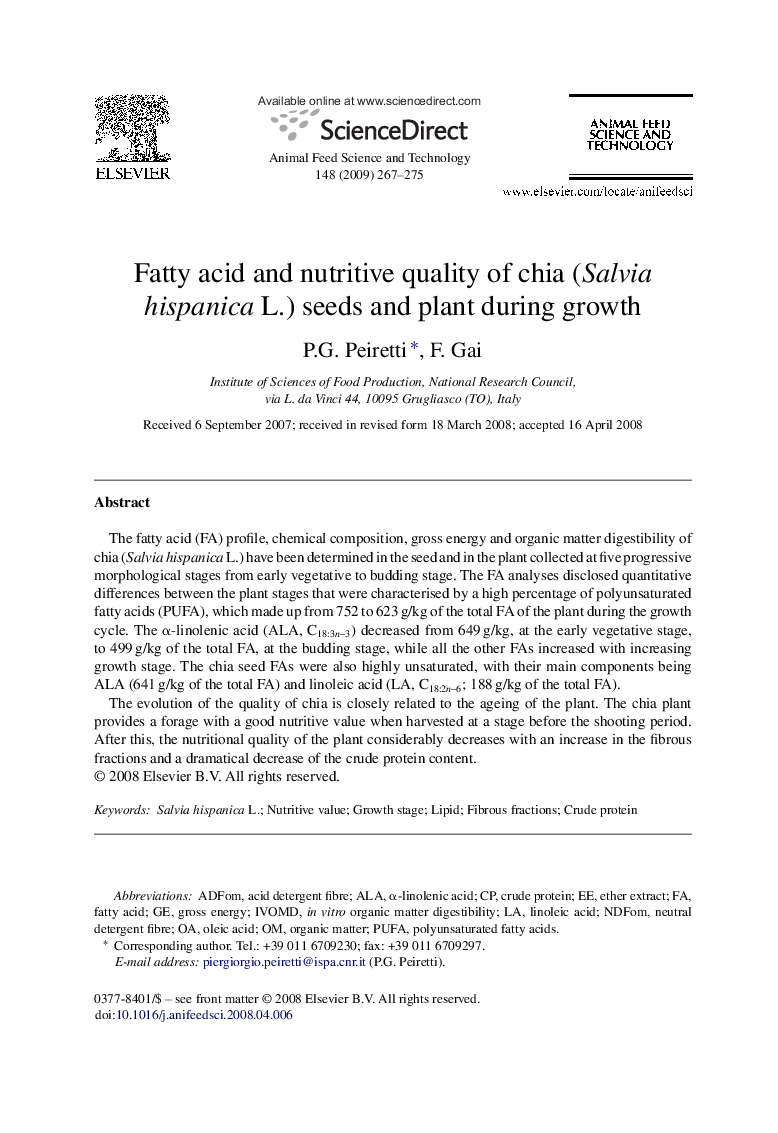| Article ID | Journal | Published Year | Pages | File Type |
|---|---|---|---|---|
| 2420611 | Animal Feed Science and Technology | 2009 | 9 Pages |
The fatty acid (FA) profile, chemical composition, gross energy and organic matter digestibility of chia (Salvia hispanica L.) have been determined in the seed and in the plant collected at five progressive morphological stages from early vegetative to budding stage. The FA analyses disclosed quantitative differences between the plant stages that were characterised by a high percentage of polyunsaturated fatty acids (PUFA), which made up from 752 to 623 g/kg of the total FA of the plant during the growth cycle. The α-linolenic acid (ALA, C18:3n–3) decreased from 649 g/kg, at the early vegetative stage, to 499 g/kg of the total FA, at the budding stage, while all the other FAs increased with increasing growth stage. The chia seed FAs were also highly unsaturated, with their main components being ALA (641 g/kg of the total FA) and linoleic acid (LA, C18:2n–6; 188 g/kg of the total FA).The evolution of the quality of chia is closely related to the ageing of the plant. The chia plant provides a forage with a good nutritive value when harvested at a stage before the shooting period. After this, the nutritional quality of the plant considerably decreases with an increase in the fibrous fractions and a dramatical decrease of the crude protein content.
